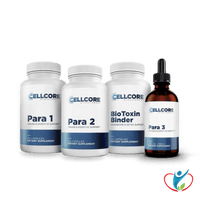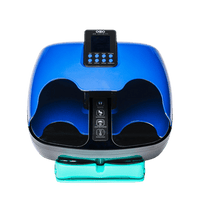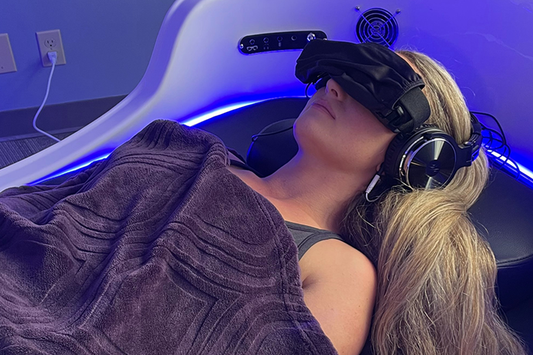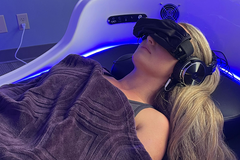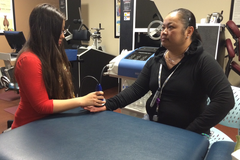We recently posted another detailed article about Hyperbaric Oxygen Therapy (Hbot). In case you haven’t had a chance to read this particular article, here is a quick recap of what Hbot is and how it can benefit many patient health outcomes. (If you would like more information about Hbot, be sure to read this article!)

Hyperbaric Oxygen Therapy - Quick Overview
Hyperbaric Oxygen Therapy, also referred to as Hbot, uses one of the most abundant elements on earth – oxygen – to heal and enhance your body’s ability to restore itself. It is a painless, non-invasive treatment that increases oxygen levels in the body, which increases blood flow, tissue regeneration, and other bodily functions that work to repair various conditions.
Typically delivered in a special capsule-like chamber, concentrated amounts of oxygen are directed through your body. All you need to do is breathe 100% oxygen at an increased atmospheric pressure. Doing this allows the oxygen to travel deeply and quickly so the body can repair itself, generate energy, and decrease inflammation. This leads to both short and long-term results through anti-inflammation efforts, antimicrobial effects, neovascularization, stem cell motivation, and mitochondrial support.
Working from the inside out, hyperbaric oxygen therapy accelerates healing for a wide variety of conditions including, but not limited to, embolism, carbon monoxide poisoning, osteomyelitis, crush injuries, decompression sickness, diabetic wounds, gangrene, soft tissue infections and damage, and even severe thermal burns.
These conditions are generally covered by most insurance and are approved by the FDA. Research continues to explore how other conditions not yet approved by the FDA still show signs of health improvements with applied hyperbaric oxygen therapy treatments.
Protocols - What to Expect
Basic protocols for your Hbot visit are simple, relaxed, and non-invasive. Essentially, all you need to do is sit back and breathe normally. In your initial consultation, a medical professional will explain how the sessions work, complete a quick evaluation to confirm there are no contraindications, and work with you to establish a plan to meet your health goals.
When you arrive for each session, a technician will greet you and check your vitals. Prior to your appointment, make sure you eat a nutritious meal, drink plenty of water, and avoid alcohol and caffeine to ensure optimum effectiveness of treatment. Also, it is very important to not wear any perfumes, hairsprays, or other related products as they may be flammable. You should consult your doctor about any other specifications or prohibited items, since every provider/facility is different.
Once you are ready for your treatment session, you will either sit inside a large room-chamber, called a multiplace, or lay down in a smaller, single chamber, called a monoplace. Depending on the facility and your health goals, oxygen will either fill the chamber, or be delivered via a mask. While you wait, simply read a book, play on your phone, or enjoy the quiet meditation. A trained healthcare professional may stay with you the entire time, ensuring you are comfortable and receive the best care. Once the therapy session is over, you are free to continue your regular activities and eating habits, with no limitations.
Repeating Treatment
A recent study has shown that long-term hyperbaric oxygen treatments could significantly improve recovery and certain bodily functions. Think of it like exercise. You have to be consistent and follow through with your plan of action in order to see the end results. The more frequently you exercise, the more benefits you will see. Similar is true for Hbot. By repeatedly receiving Hbot treatment with your healthcare team, your body experiences continuous regenerative healing. Because this treatment regimen increases the amount of oxygen your blood carries, the extra high oxygen blood levels encourage restorative body functions, even after each session ends. For this reason, many Hbot care facilities suggest multiple visits.
The duration of each treatment session and the recommended number of sessions depends entirely on your care needs and desired outcomes. Sometimes treatments can take a few minutes, other times it lasts a couple of hours with short breaks in between. Carbon Monoxide poisoning, for example, is often treated in approximately three (3) visits. Non-healing wounds, on the other hand, may need 20 or more sessions.
Generally speaking, you can expect a couple visits per week in order to receive the full benefits. Another study, specifically focused on the clinical effectiveness of Hbot on complex wounds, confirmed the wound healing process accelerated with this treatment regimen. However, the first sign of wound size reduction was noted after five (5) treatments; the greatest noted reduction occurred within the first 10 treatment sessions. This study is only one of many addressing multiple treatments, all of which continue to prove Hbot’s success in remediating the healing process. Yes, it might require multiple visits, but the results are certainly faster than the alternative.
You and your healthcare provider will create a plan based on your unique needs and schedule. With whatever plan you and your healthcare team determine, it is important to commit to the process. Even though it might not be a quick fix, it is still often an extremely successful method, especially when other methods have failed to show significant progress.
Conclusion
Like most things, consistency is key and following through with your treatment plan through multiple visits greatly increases the value and benefit of this practice. Of course, as with all medical procedures, hyperbaric oxygen therapy should be performed under trained medical supervision, at the recommendation of your health care team. By following a few simple protocols, and committing to multiple visits to receive continuous care, you are sure to see (and feel) results before you know it.
References
Kraitsy, K., Uecal, M., Grossauer, S., Bruckmann, L., Pfleger, F., Ropele, S., Fazekas, F., Gruenbacher, G., Patz, S., Absenger, M., Porubsky, C., Smolle-Juettner, F., Tezer, I., Molcanyi, M., Fasching, U., & Schaefer, U. (2014). Repetitive long-term hyperbaric oxygen treatment (HBOT) administered after experimental traumatic brain injury in rats induces significant remyelination and a recovery of sensorimotor function. PLoS ONE, 9(5). https://doi.org/10.1371/journal.pone.0097750
Opasanon, S., Pongsapich, W., Taweepraditpol, S., Suktitipat, B., & Chuangsuwanich, A. (2014). Clinical effectiveness of hyperbaric oxygen therapy in complex wounds. Journal of the American College of Clinical Wound Specialists, 6(1-2), 9–13. https://doi.org/10.1016/j.jccw.2015.03.003
